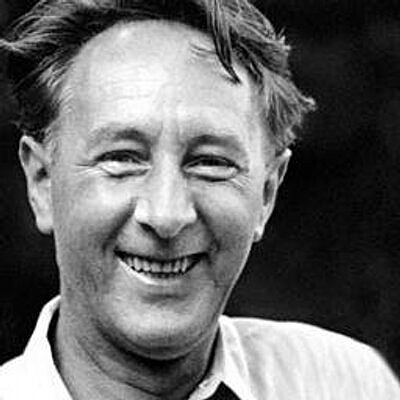As a teenager I spent many hours listening to the radio or “the wireless” as my parents preferred to call it. We didn’t have a television in those days, because we lived on a small grey island too far from the transmitter to receive a recogniseable picture. My favourite radio station was the BBC’s classical network, known at the time as The Third Programme though on occasions I secretly listened to the teenage-orientated Radio Luxembourg. The Third Programme, I discovered last night, first went on the air in September 1946. It became one of the most influential cultural and intellectual forces in Britain and played a leading role in disseminating the arts to the farthest corners of the land.

The Third Programme was a world of its own. It regularly broadcast live orchestral concerts, full-length operas, chamber music recitals and record programmes. It commissioned new works from composers and new plays and poetry from writers. With its classical music, intellectual discussions and poetry readings, some people regarded the Third Programme as a bit highbrow, but the BBC saw it as promoting “something fundamental to our civilization” and as contributing to “the refinement of society”. Thankfully, the network still exists though in September 1967, as part of a general shake-up within the BBC, the name was changed to Radio Three.
Please Support Pattaya Mail
For us kids who lived out in the sticks yet wanted to hear classical music, the Third Programme was an artistic lifeline. Late one afternoon while listening to the Third, I heard the music of Bohuslav Martinů for the first time. It was a broadcast of his Third Cello Sonata and even as a fifteen-year-old, I found the work captivating. It spoke in a tonal language which I’d never encountered before and from that day onwards, I became an admirer of Martinů’s music.
After working as a violinist in the Czech Philharmonic Orchestra, in 1923 Martinů moved to Paris which had long been a bustling centre of contemporary arts. During his career, Martinů composed six symphonies, fifteen operas, fourteen ballet scores and a staggering quantity of other works for orchestra, chamber ensemble or voices. He wrote La Revue de Cuisine in 1927 and it became his first popular success. It was originally a jazz ballet in which the dancers played a variety of cooking utensils which surrealistically swagger through romantic episodes of kitchen life.
The suite that Martinů later assembled from the ballet music is scored for clarinet, bassoon, trumpet, violin, cello and piano. It has four movements: Prologue, Tango, Charleston, and Final. However, this jazz-inspired music is by no means typical of the composer’s style for much of his work seems to be focused on loftier thoughts.
Although La Revue de Cuisine evokes the popular music of the day it uses complex rhythms and there are many irregular time-changes. It’s full of catchy tunes and a tremendous piece of fun. The neo-classical Prologue leads to a dark, dreamy tango with a solo from the muted trumpet and a lovely lyrical passage for bassoon and clarinet accompanied by pizzicato strings. It leads without a break into a jubilant Charleston which brilliantly captures the spirit of that once-popular dance. The deceptively simple Final shows Martinů’s prolific melodic invention and skillful instrumentation.
I first heard this suite on the Third Programme and at the time, it seemed oddly incongruous hearing such riotous music from a radio station normally associated with the more serious things in life. The Divertissement dates from 1930 and it’s probably the composer’s best-known work among seven operas, five ballets, several choral works and incidental music for plays and films. It’s both entertaining and thoroughly French, consisting of six movements which overflow with vivacity and bombastic high spirits.
The Introduction has amusing wrong-note effects and the second movement (Cortège) contains a hilarious quote from Mendelssohn’s Wedding March. It then transforms into a raucous march in the manner of an amateur mariachi band on a bad night. Duff notes abound, and there are odd honks from various brass instruments.
The third movement is a wistful nocturne and the fourth is an attractive waltz which turns into an uncouth imitation of Johann Strauss. The fifth movement depicts a parade with the sounds of an incompetent circus band. As the parade passes, there’s a brief but hopelessly incoherent piano cadenza which introduces the Finale, a furious chaotic march in which the players are encouraged by the frenzied blowing of a whistle by the conductor. It’s a rollicking work which combines catchy melodies, sparkling wit and delicious vulgarity, though some of the stony-faced Ukrainians in the audience don’t seem particularly amused.
 |
 |
 |





